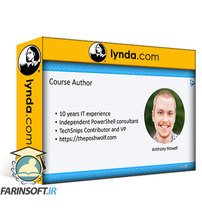در حال حاضر محصولی در سبد خرید شما وجود ندارد.

Get ready to CRUSH your Cisco DEVASC (200-901) v1.1 exam! Designed for the new (2024) DEVASC (200-901) exam blueprint.
در این روش نیاز به افزودن محصول به سبد خرید و تکمیل اطلاعات نیست و شما پس از وارد کردن ایمیل خود و طی کردن مراحل پرداخت لینک های دریافت محصولات را در ایمیل خود دریافت خواهید کرد.


آموزش مدیریت Exchange Server بوسیله PowerShell

Business – How To Start An LLC In Texas

CCST Networking – Video Training Series

CompTIA Network+ (N10-009) Crash Course (All New for 2024!)

PowerShell for Exchange Administration

ENCOR (350-401) v1.1 Video Training Series (2023 Blueprint)

آموزش نکات و ترفندهای مدیریت AWS

ساختن یک برنامه وب کامل با Ruby on Rails

مدرک بین المللی CompTIA Network+ : آزمون N10-008

Complete CompTIA Network+ (N10-008) Video Training Series
✨ تا ۷۰% تخفیف با شارژ کیف پول 🎁
مشاهده پلن ها